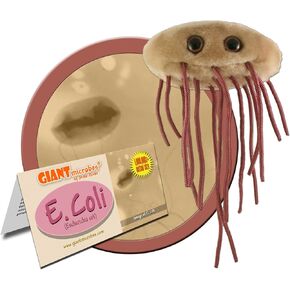- Shopping, made easy.
- /
- Get the app!
DNA Deoxyribonucleic acid, or DNA, is the amazing molecular double helix that contains the genetic codes for all known life. First identified in 1869 and accurately described in 1953, its very existence provides a new understanding about how life works. 99% of the DNA in every individual is identical – and indeed, much of our DNA is shared with every living creature on Earth. Nucleus The nucleus is the most prominent organelle inside the cells of animals, plants, fungi and eukaryotic microbes. Cell growth, metabolism and reproduction are all controlled by the nucleus. Enclosed by a double membrane, the nucleus contains the nucleolus and the cell's genetic material. The nucleus is where RNA production and DNA replication occur. Mitochondria Mitochondria generate energy for cells and also contain DNA and RNA. Mitochondrial DNA, or mtDNA, make up a tiny portion of your body's total DNA, but it is distinct from DNA in the nucleus. Nuclear DNA comes from both parents, but mtDNA is passed to you only from your mother. This genetic material comes from her egg cell and can establish maternal family ties. RNA RNA and its molecular cousin DNA are nucleic acids that carry the genetic code. RNA, or ribonucleic acid, acts as an intermediate messenger for genes, the unit of inheritance carried in DNA. DNA's code is transcribed into RNA and then translated into proteins. RNA is typically a single strand, whereas DNA is always a double strand. Chromosome Chromosomes are threadlike structures inside of cells that store genetic information. They are composed of the material chromatin, which consists of DNA, RNA and proteins. Most human cells have two pairs of 23 chromosomes, one from your mother and your father, for a total of 46 chromosomes. The DNA within chromosomes contains the genetic code that describes the physical characteristics of every known
 GIANTmicrobes E. Coli Plush – Learn About The Importance of Gut Health and Food Safety with This Unique Fun Gift for Families, Teachers, Chefs, Doctors, Gastroenterologists, Students and Scientists
KWD 6.500
GIANTmicrobes E. Coli Plush – Learn About The Importance of Gut Health and Food Safety with This Unique Fun Gift for Families, Teachers, Chefs, Doctors, Gastroenterologists, Students and Scientists
KWD 6.500
 GIANTmicrobes Plagues of The 21st Century Themed Gift Box, covid Plush, covid Plush Toy, covid Gag Gifts, covid Gifts, covid Stuffed Animal, Plush Keychain, History Teacher Gifts
KWD 12
GIANTmicrobes Plagues of The 21st Century Themed Gift Box, covid Plush, covid Plush Toy, covid Gag Gifts, covid Gifts, covid Stuffed Animal, Plush Keychain, History Teacher Gifts
KWD 12
 GIANTmicrobes Deluxe Heart Organ with Plush Blood Cells - Realistic Anatomical Human Heart Organ, Perfect Way to Say I Love You!, Educational, Medical Get Well Soon Gift, Perfect for Post-Surgery
KWD 16.500
GIANTmicrobes Deluxe Heart Organ with Plush Blood Cells - Realistic Anatomical Human Heart Organ, Perfect Way to Say I Love You!, Educational, Medical Get Well Soon Gift, Perfect for Post-Surgery
KWD 16.500
 GIANTmicrobes ADHD Plush - Spread Awareness About Brain Health and Neurodiversity with Memorable Brain Plush, Educational Gift for Friends, Doctors, Therapists, Psychologists, and Those with ADHD
KWD 7
GIANTmicrobes ADHD Plush - Spread Awareness About Brain Health and Neurodiversity with Memorable Brain Plush, Educational Gift for Friends, Doctors, Therapists, Psychologists, and Those with ADHD
KWD 7